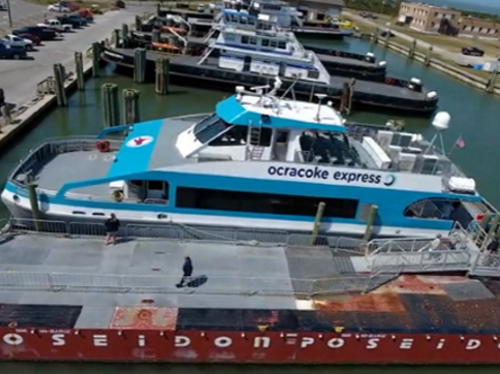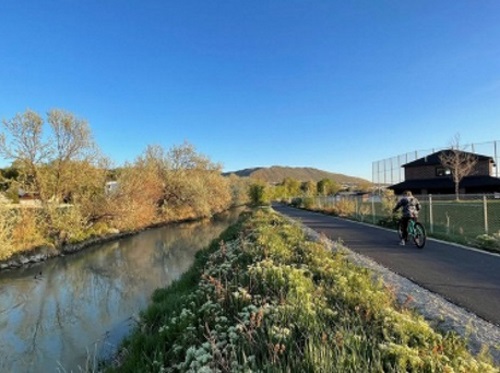FEDERAL ACTION
Energy & Environment – Are the feds closing the door on climate action? – The Hill
Nation’s governors gather in Portland, Maine to discuss infrastructure, economy – WGME-TV
All Senate Republicans Back Effort to Undo Restrengthening of Environmental Permitting Regs – Route Fifty
NEPA
FTA Publishes ‘Dear Colleague’ Letter Regarding NEPA and Early Acquisition of Real Property – FTA
INFRASTRUCTURE RESILIENCE AND SUSTAINABILITY
Colorado DOT Begins Rural Bridge Replacement Project – AASHTO Journal
New Mexico DOT looking for eco-friendly approach to roadways – KRQE-TV
Md. Senators and Congressman to MDOT: Don’t demolish Nice bridge – WBFF-TV
Georgia partners with firm on electric vehicle charging infrastructure – Atlanta Journal-Constitution
Will Los Angeles Join a Ban on New Gas Stations? – CityLab
Electric vehicles and rural transportation: Is Alaska ready? – KTUU-TV
Switzerland will build an autonomous, underground freight transport system – Interesting Engineering
Great Lakes cruise industry rides wave of sustainability – Michigan Department of Environment, Great Lakes, and Energy (Media release)
AIR QUALITY
Four companies are top sources of US greenhouse gas, methane emissions: report – The Hill
Charlotte mobility plan aims to slash car use, transform access to lower-emission options – Smart Cities Dive
Washington State’s new tax on CO2 emissions projected to add 46 cents per gallon to the cost of gas – Washington Policy Center
Long Haul To Decarbonization For Aviation Industry – Barron’s
Despite Biden Push for Green Transportation, U.S. Trucking Still Drives on Diesel – InsideSources
ENVIRONMENTAL JUSTICE
MassDOT Incorporates Equity Factors into Pedestrian Safety Analysis – FHWA Innovator
How The Ride-Sharing Revolution Failed Passengers With Disabilities – The Verge
Draft Environmental Justice Action Plan for EPA’s Land Protection and Cleanup Programs – EPA (Media release)
NATURAL RESOURCES
Environmental groups allege L.A. River Master Plan was approved without proper review – Los Angeles Times
CULTURAL RESOURCES
How the Amusement Park Conquered America – Bloomberg
How to greenify all aspects of your vacation – Washington Post
HEALTH AND HUMAN ENVIRONMENT/ACTIVE TRANSPORTATION
Brevard County, Florida Partners With Groups To Reduce Deadly Crashes Involving Bicyclists, Pedestrians – WFTV-TV
South Carolina Nonprofit Uses Database To Track Encounters With Motorists And Pedestrians – WCSC-TV
Miami Valley Regional Planning Commission wants to make outdoor ‘active transportation’ safer – WYSO Radio
Austin transportation department launches pilot program to clear up scooter congestion downtown – KTBC-TV
Microtransit Changes Up the School Commute for Arizona Students – Government Technology
Study Shows Bike Sharing Leads to Higher Property Values – Metro
Des Moines hopes to use railroad tracks to connect Riverwalk to state Capitol – KCCI-TV
NDOT, Community Celebrates Opening of Multi-Use Trail in Caliente – Nevada DOT (Media release)
TRB RESOURCES/ANNOUNCEMENTS
SEAHIVE – Sustainable Estuarine and Marine Revetment – NCHRP
Considering Quality of Life in Transportation Planning and Development – TRB (Webinar)
FEDERAL REGISTER NOTICES
Notice of FTA Transit Program Changes, Authorized Funding Levels and Implementation of the Infrastructure Investment and Jobs Act; and FTA Fiscal Year 2022 Apportionments, Allocations, Program Information and Interim Guidance; Correction – FTA (Notice, correction)
Multistate Conservation Grant Program; Priority Lists for Fiscal Years 2019, 2020, 2021, and 2022
– Fish and Wildlife Service (Notice)
National Performance Management Measures; Assessing Performance of the National Highway System, Greenhouse Gas Emissions Measure – FHWA (Notice of proposed rulemaking; request for comments)
Request for Information (RFI) on Federal Old-growth and Mature Forests – Forest Service and Bureau of Land Management (Request for information)
Federal Motor Vehicle Safety Standards; Minimum Sound Requirements for Hybrid and Electric Vehicles – NHTSA (Final rule)
Great Lakes Pilotage Advisory Committee Meeting – Coast Guard – (Notice)
Evaluation of State Coastal Management Program; Public Meeting; Request for Comments (Michigan) – NOAA (Notice)
Evaluation of State Coastal Management Program; Public Meeting; Request for Comments (Virginia) – NOAA (Notice)
Marine Highway Project Designation Open Season and Renewal of Project Designations – Maritime Administration (Notice)
Air Plan Approval; California; Mojave Desert Air Quality Management District – EPA (Proposed rule)
Air Plan Approval; Arizona; Maricopa County Air Quality Department – EPA (Final rule)


